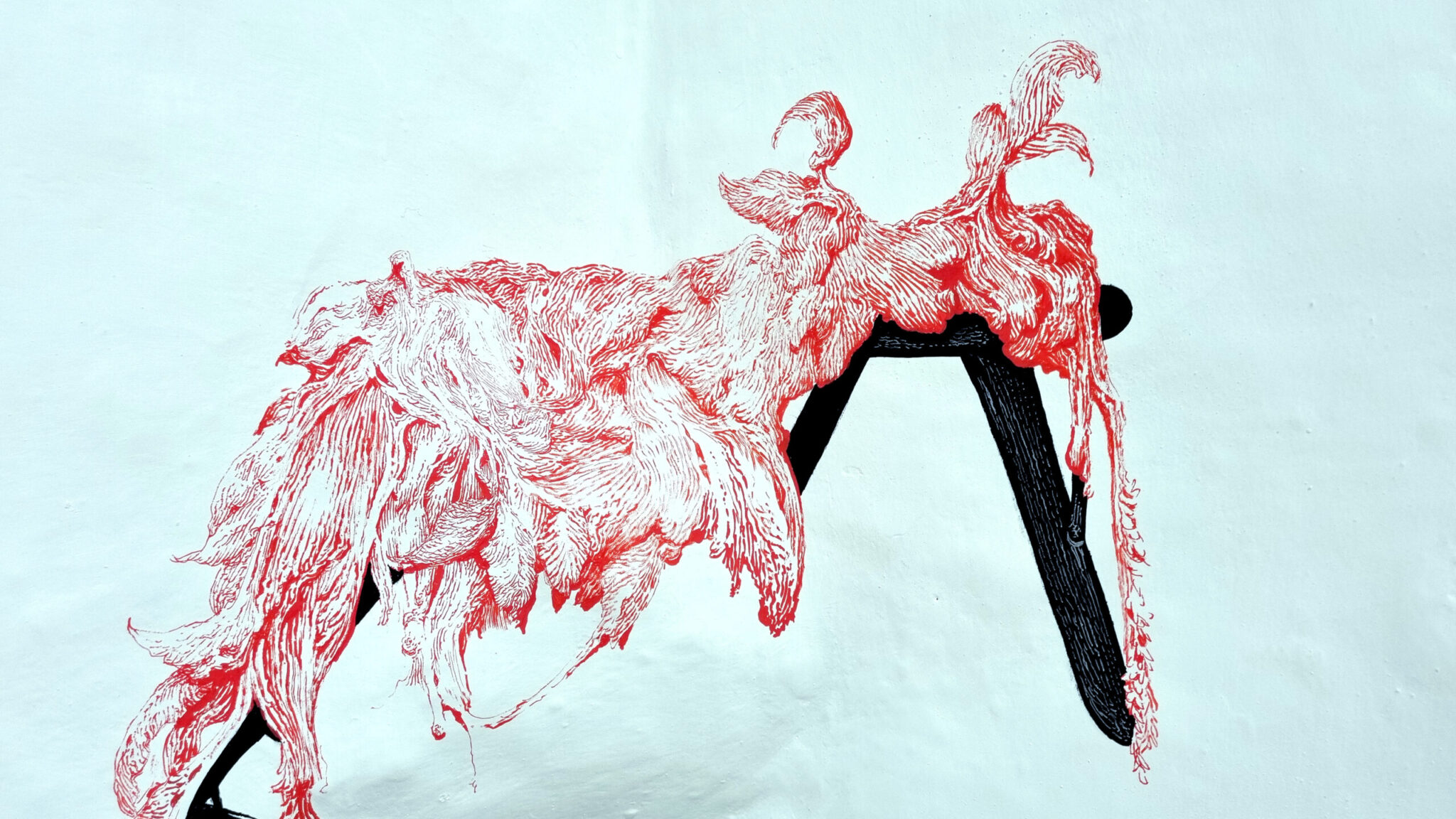“Thought is the product of the entire body”
Émile Zola
“It burst onto the scene like a sudden explosive event,” says Werner Herzog referring to artistic expression, in his documentary The Cave of Forgotten Dreams, about the paintings discovered in the Chauvet cave in Southern France. Refined and beautiful, located in the depths of the cave, untouched by sunlight, they are a great mystery for scientists, who marvel at how Palaeolithic humans, whose primary concern we assume to have been survival, overcame the risk of entering the darkness and clambered down into the belly of the Earth. “We are seeing art in its naked state, deprived of any discernible appropriation. This can trouble our secular sensibilities since it confronts us not just with the mysteries of nature, but more strikingly still with the riddle of the presence of such things as us in the otherwise coherent physical world,” says J.F. Martel. They seem to belong to “a distant and familiar universe”. Just as an internal pain can come on suddenly, forcing us to realise that this organ, which has suddenly revealed its existence, was always there, is part of us.

Jesús Zurita has said and written on several occasions that the vegetative elements in his work act as a metaphor for the flesh, for the human. His landscapes of entrails force us to experience a passive genesis of consciousness that subjects us, through an empathic process, to the disturbing effect of the identical. Likewise, such a revelation draws our attention to a previous absence, which then becomes strange to us. We perceive ourselves as an “Other” that precedes and possesses us. However, that perception of the personal as an “Other” responds to the opposition between concepts as opposed as identical and strange, and it is in this context, between what causes us horror through familiarity and astonishment through unfamiliarity that the artist places us.
If we understand the skin as a boundary that separates the inside from the outside, we must interpret that everything beyond that boundary is opposed to the “Self”. The flesh, in this case, is ripe; we sense putrefaction, and there is nothing more abject than to be confronted with our own mortal condition as living beings. The fascination sparked by contemplating outside of us that which usually dwells within us—like fluids or viscera—lead us to ricochet between a pole of attraction and another pole of repulsion forced by otherness.
Like the rock paintings in the Chauvet cave, the series of four canvases that open the exhibition offer a collection of images that seem to emerge from the darkness. Some of them evoke organic forms once more in which we perceive an artificial, and thus human, imprint. The blue pigment recalls the copper oxide used in traditional Chinese ceramics to achieve a specific tonality and evokes an ancestral practice used to contain matter within its hollow. In No hay nadie. Necesariamente (There is no one. Necessarily), a snakelike luminous form comes face to face with another hidden in the shadows.

Allí será aquí (There will be here) and Aquí será allí (Here will be there) allude to two stories told in Genesis that sow confusion, for the characters share the same name: Enoch. One is the son of Cain, the fallen angel who founded the first city to celebrate the birth of his firstborn after being condemned to wander the Earth eternally after killing his brother. The other is Noah’s great-grandfather. Of him it is said that, in the face of what would happen, God took him to prevent him from seeing death. He was never found. Here Enoch is, at one and the same time, a territory inhabited by the wicked and two characters that we can describe as antagonists: The first “is the recipient of the first inheritance, the transmission of Adam’s stigma, and Cain’s abjection to humanity. He is at the source of our infections,” says Zurita. The second “is the void from which the rest of his genealogy emerges. His legacy becomes chronic in our posterity”. The two pieces form a wedge-shaped architecture that houses an internal space and whose vertex converges in us if we decide to examine it.
Pólenes (Pollens), the title chosen by Jesús Zurita for this exhibition, is, as one might expect, significant. Pollen precedes us. It travels on the oldest winds. It imbues us and invades, coming to rest in any crook of our body, allowing us no escape. It pollutes us, and yet it also nourishes us.
The artist tells us about his beginnings in the art world, reviews the Pólenes exhibition and talks about his relationship with art galleries.
Featured on Televisión Canaria News
Featured on Spanish Television News
Written press
Article on the Plataforma de Arte Contemporáneo portal - May 19, 2021
Article in the newspaper El Día - May 14, 2021
Article in the newspaper Diario de Avisos - May 14, 2021
